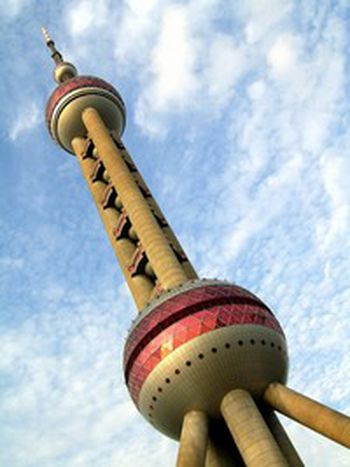
The dark side of the boom
Published on
Translation by:
Francesca ReinhardtHardly a day goes by without the business press painting China as the world’s next superpower. What exactly is giving rise to these hymns of praise – and are there really grounds for the euphoria?
For many years, India has been the darling of western businesses, who rushed to outsource services and aspects of production to the Indian subcontinent. However, in recent years, India has gained a competitor: China’s seemingly inexorable rise as an economic superpower threatens to leave India behind.
Factory of the World
This rise has been a long time in the making: with Deng Xiaoping's arrival in 1978, the Chinese leadership began the current transformation from an inefficient, centrally-planned economy to a stronger, market-oriented system. Although the regime remained strictly communist, private enterprise and individual citizens steadily increased their role in the economy. Land was no longer collectively run but given to individuals to take responsibility for; non-state enterprises were allowed into industry and have been able to compete with state enterprises ever since. Rapid economic growth is, above all, a result of China opening its markets. China can now conduct trade with other countries, and businesses in other countries can invest in China. With its legions of cheap labour, China has earned itself a reputation as the ‘factory of the world’, regularly flooding markets with its ‘made in China’ products. Thus, with foreign direct investment rising and more and more foreign businesses putting money into Chinese firms, China has been able to enter the world market.
Ramshackle banking system and environmental pollution
So is China’s economic boom really unstoppable? Can the national economy of the Middle Kingdom continue this rapid trend of growth and supplant the established economic powers of the United States and Europe as world leader? It is worth taking a closer look at the data. It is true that China’s gross domestic product (GDP) is skyrocketing ahead of the big economic powers. It has quadrupled its GDP since 1978 and annual growth has remained for years at around 9%. However, if one looks at per capita distribution of GDP, China emerges as a poor country: with $5,600 per capita, it ranks 121 st in the world. By way of comparison, the US produces a GDP per capita of $40,100.
Foreign direct investment (FDI) is also a double-edged sword. Indeed, growth has been stimulated by the steady increase in FDI. However, this means that China’s economy is now particularly dependent on foreign cash flows. China’s banking system is a further source of economic instability. For many years, the former state banks have propped up the sickly state enterprises with credit, in order to minimise job losses. Now the banks have to shoulder a great deal of unpaid debt.
Environmental pollution could also put the breaks on economic development: air pollution, soil erosion and the steady retreat of water tables in the north are problems which are getting worse. The Harbin disaster, where for two weeks a hundred tonnes of Benzol contaminated the drinking water supply, shows that the rapid growth of Chinese industry is not accompanied by the necessary environmental standards. Add to that the challenges brought about by the One Child policy, which bestows China with a place among the fastest ageing societies in the world. The result of this hybrid system is that China combines the disadvantages of both communism and capitalism: with communism comes bureaucracy and inertia, while with capitalism comes growing disparities in income and rising unemployment.
The EU still ahead
The angst regarding China is also unfounded, if one considers that a strong Chinese market brings great advantages to the national economies of the West. China is not only much in demand as an outsourcing location for cheap production of mass market goods, such as trainers and T-shirts; with 1.3 billion inhabitants, it is also one of the biggest retail markets for EU goods.
The bare economic data seldom shows the whole picture: China’s phenomenal growth rate is mostly thanks to the production of conventional industrial goods. However, much higher returns are hidden in the service sector – and here China comes off badly. This is the decisive reason why India will continue to rule the headlines in the future, as outsourcing will see its biggest gains in the service sector. Because of its higher standards of education, the EU is still a nose length ahead of the Red Dragon. The EU currently benefits from the increasing concentration in the production of non-material goods such as consulting services and software development. Thus, the EU has to push the development of these market sectors further if it wants to ensure that trade with China continues to increase Europe’s productivity and lower prices.
Translated from Die Schattenseite des Aufschwungs



